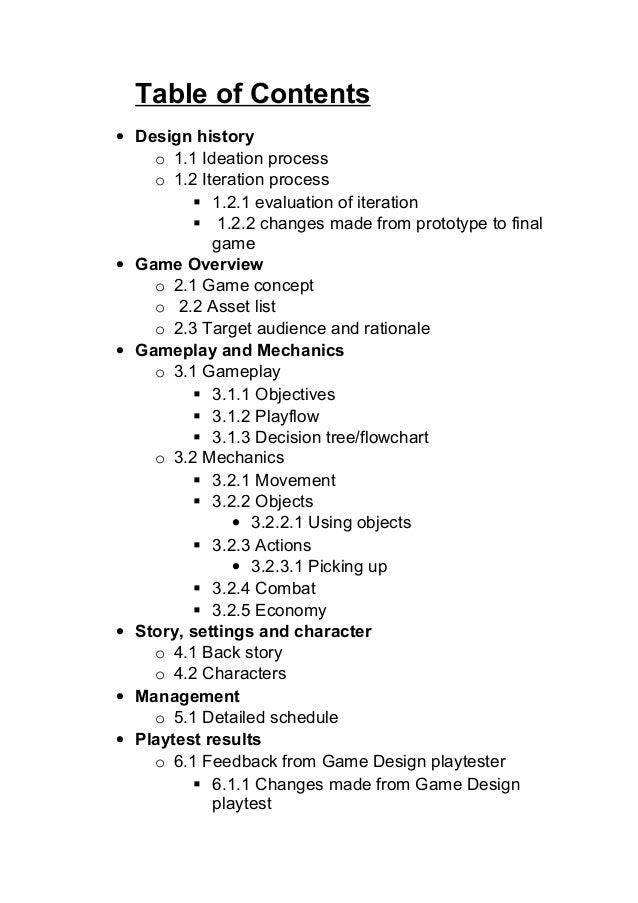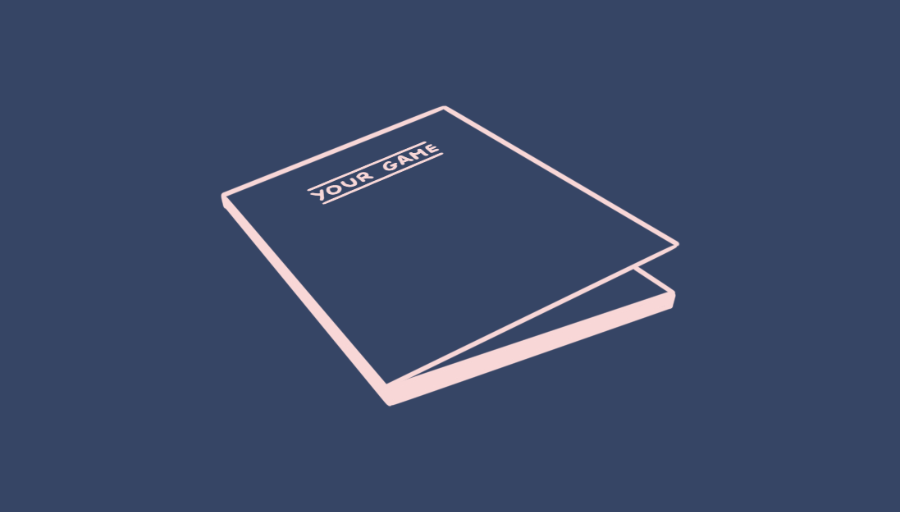Table Of Content

A reader should be able to glance at your feature doc and walk away with a decent grasp of what you’re after. Concept art makes this complicated weapon feature much easier to understand at a glance. Keeping it high level and simple is more than enough to start, then you can click on the link and start spelling out your thoughts more in depth. In my case, I elected to only outline the macro-level loop – a prep stage where players prepare for the mission, combat where they are tested with their allies.
Outline all the parts of your next video game
A Game Design Document can be an invaluable tool for hypercasual studios - Pocket Gamer.Biz
A Game Design Document can be an invaluable tool for hypercasual studios.
Posted: Tue, 12 Jul 2022 07:00:00 GMT [source]
Deciding exactly what it is you’re trying to design can be difficult however, to make it a little easier, try to think specifically about the problem you’re trying to solve. This is because trying to teach someone else how your design works, even if it’s just you that will read it, can often be the fastest way to find out what’s not going to work, what’s missing and what doesn’t make sense. Using only a single page to communicate your design can work well for a few reasons. A wiki is, essentially, an online collaborative tool, that allows multiple people to access and edit the same information. A way for you to translate the ideas you have about your game for someone else in the best way possible.
Art and Sound
So it’s a great way to confidence in your ability to deliver the game successfully. Laying out a clear vision in your GDD can also help the team stay motivated and focused. Because when team members understand your game’s purpose and goals, they’re more likely to be more invested in its success.
When and How to Clearly Communicate a Feature
Q&A: Get to know the STEM Video Game Challenge - Australian Council for Educational Research
Q&A: Get to know the STEM Video Game Challenge.
Posted: Tue, 23 Apr 2024 04:06:15 GMT [source]
To avoid your page from becoming multiple pages in one place, it’s important to choose what the main focus will be. For example, Gantt charts can be useful for explaining when the different stages of a project are expected to start and end, who will work on them and how long they will take. A blueprint works because it’s easy to understand, easy to modify and troubleshoot and is the most appropriate method of communication for that type of information. For example, Trello can be great for managing multiple tasks at different stages of development, where each task’s description is detailed on a card that can be assigned to one or more people. But, if your GDD includes multiple sections and information, organising it in a single file can be tricky and, even with linked section headings, can be difficult to navigate. However, even when it’s split up like this, a long written document can be difficult to organise, difficult to manage and difficult to use.
I've created an easy-to-understand game design document template for gamedev beginners like me. This GDD template is mainly for video games but you may use it however you want as long as you read and follow the license. Knowing how to write a game design document is a common job requirement for game designers, and for good reason. So rather than doing away with game design documents altogether, the documentation process can be adapted to support the creative, iterative, and collaborative process of game development. A game design doc is a living document that details the overall vision that shows how the gameplay, story, narrative, art, audio, and UI/UX connect to create a game. Used by an individual or a team, GGDs track changes between departments and help focus ideas into features.
Game Director vs Creative Director: Understanding Their Pivotal Roles
Which can be useful, as it allows you to keep every detail of your game in a single location. Some people love them, while others insist that they are obsolete and have been for some time. Or it might be because other people are going to work on your game with you, and you need a way to show them what the game should or should not be like.
Traditional written GDDs, characterized by their comprehensive and detailed nature, provide a meticulous master checklist for game development, bringing clarity and precision. However, they may lack flexibility for updates and can be more challenging to maintain compared to other formats. Matthew "Queso" Niederberger does not find them helpful to the design process. In a Cohost comment, they noted that they feel a static document simply communicates the wrong information most of the time, and that so much of the GDD writing process can be a waste of time in itself.
Now it’s your turn
Creating a traditional written GDD involves the meticulous crafting of a comprehensive and organized document. This document then functions as a central reference point and directs the game development process. It furnishes programmers and artists with the requisite details for executing the game. The GDD offers a clear and comprehensive overview of the game’s design and development, ensuring that all team members share a common understanding of the game’s vision, mechanics, and goals.
Project Title
Even though your game might not be as big or complex as these ones, just having a look at a commercial GDD can be inspiring. Here are a few professional GDD examples that you can download and read. If you’re looking for a way to jump start your game design document, start by copying and pasting this outline into a blank Word or Google Doc. As you write, feel free to change or reorganize the structure as the needs of your unique game become more clear. At the end of the day, how you write your game design document is up to you and your team. Creating a video game is far from a trivial task, and while maintaining internal documentation may seem like a tedious task, it can save you a lot of time down the road.
Word is a great tool that has its applications but documenting a game design process is not one of them. Its rigid and closed nature will guarantee that no matter how great the content is, it will end up locked away on someone's hard drive, without ever being updated or likely even opened. A GDD is meant to be a constantly evolving, living document, and the tool you choose needs to accommodate that. Yet as distributed teams and multi-studio development are becoming increasingly common, the need for centralized game documentation is not going away.
Words aren't the most efficient way to express visual or mathematical concepts -- and games, primarily, are a visual medium combined with numerical systems. If you don’t know know what your design document is supposed to explain, it can be extremely difficult to make anything that’s actually useful. One of the most important parts of writing any kind of design document is making a decision about what its purpose is. And while you might assume that all you need to do to communicate the design of your game is to write it all down in one place, the reality is that most people, yourself included, probably won’t read it. And while large written design guides have, reportedly, fallen out of fashion in recent years, there’s a lot to be said for having all of your game’s information organised and stored in a single place.

Want to get into games but get lost in tracking your changes, jotting down your ideas, or don’t know where to start? The last item on your project overview should be about the genre of your game. Each genre has different technical requirements so it’s absolutely vital to decide on the game genre before proceeding with the design. If you’re a business owner who wants to outsource the project, you can put down the budget and time you would wish for the development team to work with.
If you’re ready to go and you’re doing it all on your own – then fine, feel free to dive in and explore for a bit. However, if you’re going to work with even one other person or spend more than a month on your idea, then jumping straight into execution is a recipe for disaster. Each of these categories of accessibility can be more deeply assessed with thoughtful considerations. For example, if your game has very complicated control schemed, odds are that it lacks motility accessibility. Or, as another example, if your game absolutely relies on the color "blue" to denote meaning, people with a form of color blindness will likely miss out on information or gameplay elements.

No comments:
Post a Comment